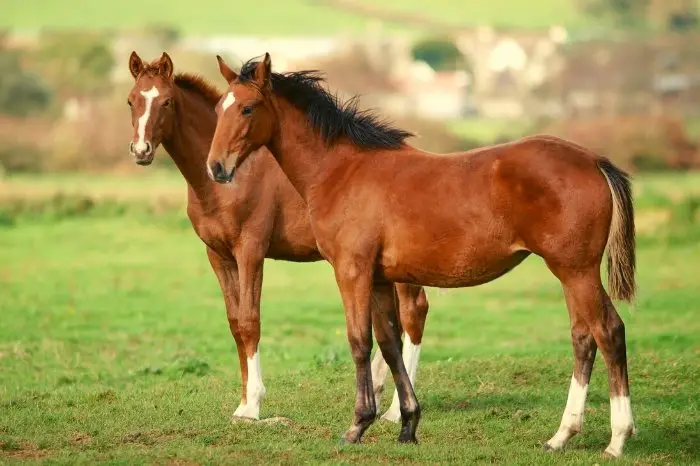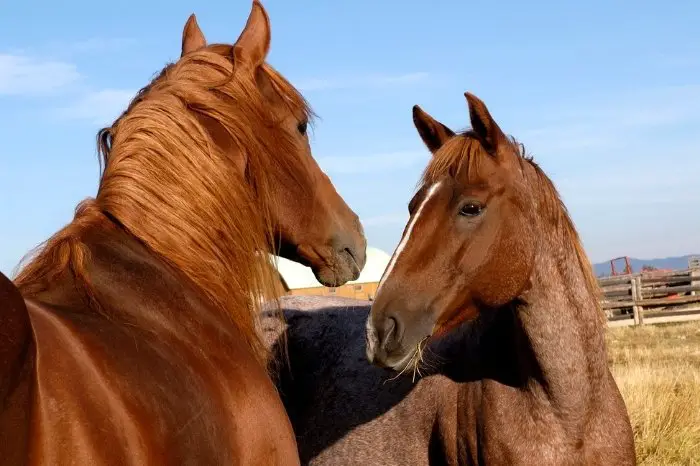Last Updated on March 20, 2022
Horses are one of the most incredible animals in the world. Throughout their life, they will experience different horse growth stages. During these different stages, they will reach various milestones. Understanding these different stages of life will help you better care for your horse.
During these stages, your horse will undergo many physical changes. One of the most important changes horses will undergo is their skeletal development, which is vital for their soundness and performance. Understanding these developmental stages will allow you to understand when your horse can safely be ridden and at what ages they are at their peak performance.
Horse Growth Stages
There are five main life stages of a horse: suckling, weanling, yearling, colt or filly, and mare, stallion, or gelding. During these stages, horses will undergo many different changes as they grow. They will undergo dietary and physical changes as they grow.
These facts about a horse’s life cycle will help you better understand all the physical and mental changes a horse goes through. A horse will generally be fully mature between five to seven years old.

Suckling – Horse Growth Stages
Baby horses under the age of one are referred to as foals. However, when they are foals they experience two different stages, suckling and weanling.
When a horse is a suckling, they are still nursing from their mother. They depend on their mother to provide them milk for sustenance. Within hours, sometimes even minutes, of being born foals are on their feet and nursing.
Within the first few days of life, a foal will nurse as often as every 10 minutes. However, by a month old they will normally nurse around every hour or so.
Foals may begin to nibble at grass or even concentrate within a few weeks of birth. Within a few months of birth, they will then begin to eat hay and concentrates along with still nursing. Around three months, they will depend less on milk and begin eating more grass and hay.
After four months, a foal’s nutritional needs surpass what the mother can provide. Though they still may nurse at this age, they do not solely depend on milk and they will eat hay, grass, and even concentrates.
Manna Pro Nurse All Multi-Species Milk Replacer
Weanling
A weanling is a horse that is still a foal but is no longer nursing from its mother. Most foals are weaned from their mother between four to six months old.
There are two common methods of weaning a foal: abrupt and gradual. The abrupt process is most commonly done when there are several foals, as they will have their herd mates to console them. Gradual weaning is generally done when there is just one foal and it is a process that takes several days.
When a horse is a weanling, they will learn important socialization skills with both horses and people. A proper diet is very important to help the foal grow and mature. Weanlings tend to be very active as they explore their environment.
Yearling – Horse Growth Stages
Once a horse reaches a year old, they become a yearling. Horses are considered yearlings between the age of one to two. Yearlings continue to need guidance as they interact with other horses and people.
As a yearling, a horse should be comfortable with wearing a halter and lead rope. They should be able to walk on a lead and stand for the vet or farrier.
Many people begin basic groundwork when a horse is a yearling. It is also a good time to get your horse acclimated to grooming and even practice loading and unloading in a horse trailer. As a yearling, a horse may experience awkward growth spurts.
Colt Or Filly
A male horse under four years old is a colt and a female horse under four years old is a filly. In some cases, people may refer to colts and fillies as horses under five years old.
During this age, horses will undergo important developments in their skeletal development. They will become more mature physically and mentally. During this time frame, horses will learn more groundwork and even begin under the saddle.
Mare, Stallion, Or Gelding
Male horses that are intact older than the age of four are known as stallions and female horses over the age of four are known as mares. When a stallion is castrated, they become a gelding.
By the age of four, a horse is almost completely mature and by the age of five to seven, all of a horse’s growth plates will likely be closed. Many horses will reach full adulthood by the ages of five or six. At this point, they can handle advanced training, as they are physically fit enough for riding at top levels.
Some people may start horses under the saddle as young as 18 months to two years old. However, many will wait until a horse is three to four years old to begin saddle work. Most horses are in their prime for riding between five and 15 years old, however, many horses can be ridden past the age of 15.

Horses are fit for breeding by the age of four. Though fillies can reproduce at two years old and colts can reproduce as young as 12-14 months, many breeders will wait until horses are at least four years old for breeding.
Though horses were once considered ‘aged’ at the age of 15, most horses are not considered seniors now until they are 20 years old. At this age, horses may begin to slow down, show more wear on their teeth, and may need dietary changes.
Understanding The Horse Growth Stages
A horse will undergo five main stages throughout life: suckling, weanling, yearling, colt or filly, and mare and stallion (or gelding). By the age of four to six months, a horse will be weaned from its mother. By five to seven years old a horse will be fully mature and by 20 years old, they are generally considered a senior.
Do you have any questions regarding the horse growth stages? If so, please ask any questions regarding a horse’s growth and development in the comment section below.

